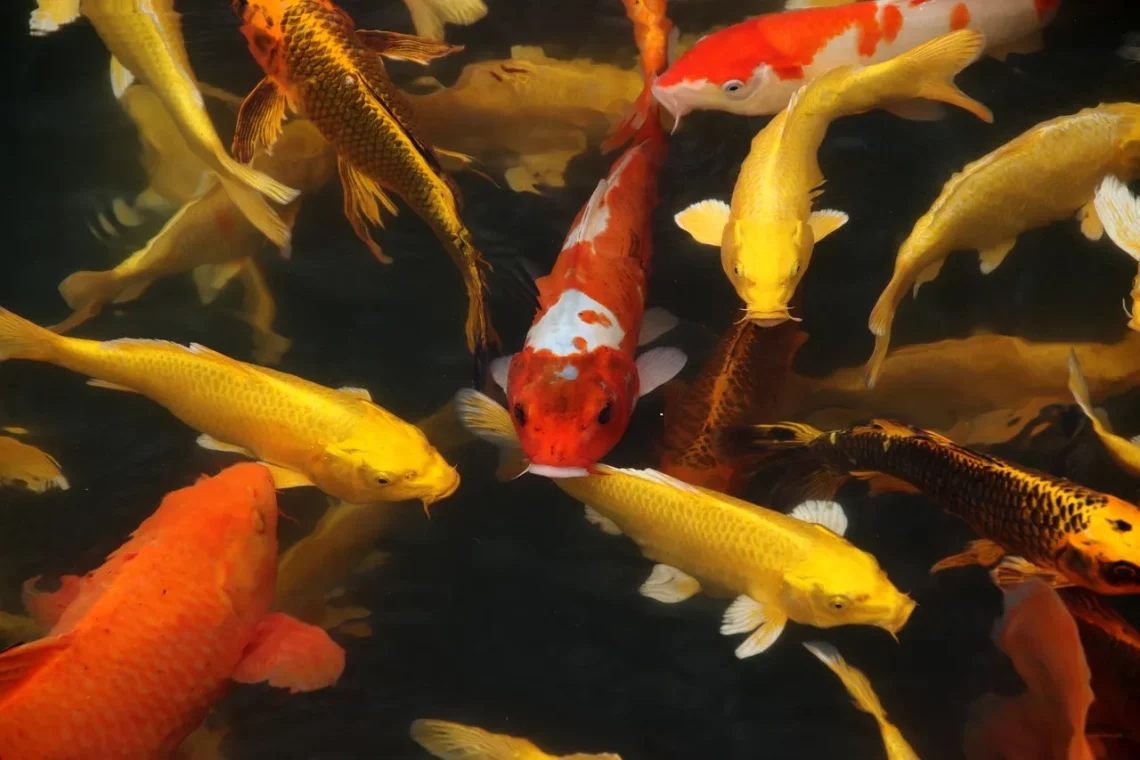
How Long Can Fish Survive Without Food in Different Conditions
Fish are fascinating creatures that inhabit various aquatic environments, from tranquil freshwater lakes to the vast depths of the ocean. Their adaptability and resilience have allowed them to thrive in diverse habitats, each presenting unique challenges and opportunities. One of the most intriguing aspects of fish biology is their ability to survive for extended periods without food. This ability often raises questions among aquarists, fishermen, and nature enthusiasts alike.
Understanding how long fish can survive without food is crucial for anyone who keeps fish as pets or engages in fishing activities. The duration they can go without sustenance varies significantly based on several factors, including the species of fish, their age, health, and the environmental conditions they are exposed to. Moreover, the metabolic rates of fish can differ greatly depending on water temperature and oxygen levels, further influencing their survival without food.
In this article, we will explore the various factors that determine how long fish can survive without food, examining the implications of different conditions on their survival rates. By delving into this topic, we can gain a deeper appreciation for these remarkable creatures and their remarkable capacities to endure hardships in their environments.
Understanding Fish Metabolism
Fish metabolism plays a crucial role in determining how long they can survive without food. Metabolism refers to the biochemical processes that occur within living organisms to maintain life, including energy production and nutrient utilization. In fish, metabolism is primarily influenced by their environment, particularly water temperature and oxygen availability.
Fish are ectothermic, meaning their body temperature is regulated by the surrounding water. As the water temperature increases, so does their metabolic rate. This leads to a higher demand for energy, resulting in a greater need for food. Conversely, in cooler water, their metabolism slows down, allowing them to conserve energy and survive for more extended periods without feeding. For instance, a fish in warmer waters may require food every few days, while a fish in colder waters might manage to go weeks without a meal.
Additionally, different species of fish have varying metabolic rates. For example, species such as goldfish can survive for weeks without food due to their slower metabolism, while more active species like trout may only last a few days. Age and health also play significant roles in a fish’s ability to endure fasting. Younger fish typically have higher metabolic rates, thus requiring more frequent feeding compared to their older counterparts. Moreover, a healthy fish is more likely to withstand periods of starvation than one that is sick or stressed.
Understanding these metabolic factors is essential for those who keep fish in aquariums or engage in fishing. It highlights the importance of maintaining appropriate environmental conditions to ensure the health and longevity of fish, particularly during times when food may be scarce.
Impact of Water Temperature
Water temperature significantly affects fish survival, especially in relation to their ability to go without food. As previously mentioned, fish are ectothermic, meaning their body temperature is directly linked to that of their environment. Higher temperatures typically lead to increased metabolic rates, while cooler temperatures slow down metabolic processes.
In warmer waters, fish expend more energy and require more frequent feeding to support their heightened metabolism. For example, tropical fish, which thrive in warmer climates, may need to eat daily or even multiple times a day. If food is unavailable, these fish can quickly deplete their energy reserves, leading to potential health issues or death within a short timeframe.
Conversely, fish in cooler waters can survive without food for longer periods. The lower metabolic rates associated with cooler temperatures mean that these fish require less energy and can rely on stored fat reserves to sustain themselves. Many cold-water fish species, such as certain types of trout, can survive for several weeks without food, particularly during the winter months when they enter a state of dormancy.
However, it’s essential to note that prolonged fasting, regardless of temperature, can weaken fish and make them more susceptible to diseases. Therefore, while cooler temperatures can extend the time fish can go without food, it does not mean they are immune to the negative effects of starvation.
Understanding the influence of water temperature on fish survival is vital for aquarists and anglers alike. By maintaining appropriate water temperatures, we can help ensure that fish remain healthy and can thrive even during periods of food scarcity.
Species Differences in Food Resilience
Different fish species exhibit varying degrees of resilience when it comes to surviving without food. This variation can be attributed to their natural habitats, feeding behaviors, and evolutionary adaptations. Understanding these species differences is crucial for anyone involved in fish care or fishing.
For instance, many freshwater species, such as catfish and carp, are known for their ability to survive extended periods without food. These fish have adapted to environments where food availability can fluctuate, allowing them to develop efficient energy conservation mechanisms. Catfish, in particular, can survive for weeks without food due to their ability to utilize stored energy effectively.
On the other hand, marine species often have different feeding patterns that influence their survival rates without food. Predatory fish such as sharks and barracudas typically have higher metabolic rates and require more frequent feeding compared to their prey. For example, a shark may only survive a few days without food due to its high energy demands, while its prey may last significantly longer.
Moreover, some species, like the goldfish, have a remarkable ability to endure fasting. Goldfish can survive for several weeks without food, primarily due to their slower metabolism and ability to utilize their fat reserves. This adaptability makes them popular in home aquariums, where feeding schedules may vary.
In summary, recognizing the species-specific differences in food resilience is essential for proper fish care and management. By tailoring feeding practices and environmental conditions to the specific needs of each species, fish keepers can promote healthier, more resilient fish populations.
Environmental Factors Affecting Starvation Survival
Aside from water temperature and species differences, several other environmental factors can significantly impact how long fish can survive without food. These factors include water quality, oxygen levels, and the presence of stressors in their environment.
Water quality is crucial for fish health and can greatly influence their ability to withstand periods of starvation. Polluted or low-quality water can stress fish, making them more susceptible to disease and weakening their overall condition. When fish are under stress, their metabolic rates may increase, leading to a greater demand for food. Consequently, fish in poor water quality conditions may not survive as long without food compared to those in clean, well-maintained environments.
Oxygen levels in the water also play a vital role in fish survival. Fish require oxygen for respiration, and low oxygen levels can lead to increased stress and a higher metabolic rate. In such conditions, fish may deplete their energy reserves more quickly, reducing their ability to survive without food. Therefore, maintaining adequate oxygen levels is essential for ensuring that fish remain healthy and resilient in times of food scarcity.
Additionally, environmental stressors such as overcrowding or sudden temperature changes can negatively impact a fish’s ability to cope with fasting. Fish that are stressed are more likely to experience health issues and have reduced energy reserves, making them less capable of surviving extended periods without food.
In conclusion, various environmental factors can significantly influence fish survival without food. By ensuring optimal water quality, adequate oxygen levels, and minimizing stressors, fish keepers can enhance the resilience of their fish, allowing them to thrive even in challenging circumstances.
—
**Disclaimer:** This article is for informational purposes only and is not intended as medical advice. For any health-related concerns regarding fish or other aquatic animals, please consult a qualified veterinarian or expert in aquatic health.




